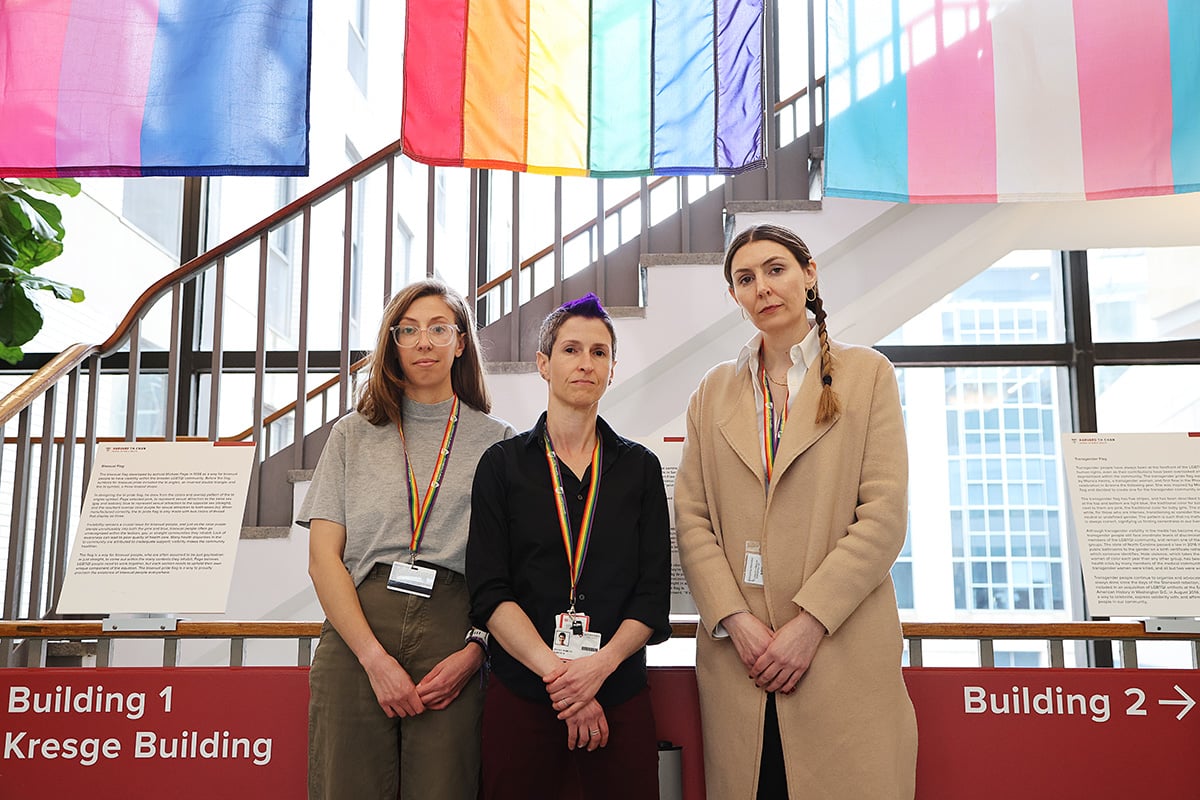
I am always happy when my work generates a public discussion. That happened after a January column I wrote about a prominent scholar’s critique of the evidence for including children with disabilities in general education classrooms. Advocates, parents and teachers argued for inclusion, against inclusion and for some hybrid of the two. The director of education at the Learning Disabilities Association of America weighed in, as did the commissioner of special education research at the U.S. Department of Education. More than 160 people commented on one Reddit discussion about the story. Here’s a sampling of views I received or saw on social media. (Comments were lightly edited for clarity.)
Inclusion in the general education classroom is a ‘human right’
Abby Taylor recently earned her doctorate in special education at Vanderbilt University, where Douglas Fuchs, the author of the controversial paper, is a professor. She is now an adjunct professor of special education at the University of West Georgia. According to her professional biography, her passion is in supporting special education inclusion and she has taught in an inclusive preschool classroom. Taylor emailed me.
We are always working towards supporting people’s understanding of inclusion as a human right and not as an intervention or variable in a research study.
Given that segregation is inherently flawed and unethical regardless of how students perform, it is critical to recognize our country’s systemic educational barriers for students with disabilities even within the context of inclusion (thus, preventing students with disabilities from achieving their full potential even within inclusive settings).…This published article alone perpetuates harmful rhetoric that leads to the further exclusion and mistreatment of children with disabilities despite their legally mandated right to inclusion in the general education setting.
Related: Our free weekly newsletter alerts you to what research says about schools and classrooms.
Higher test scores aren’t the only or even the most important goal
Chris Yarrell, an attorney at the Center for Law and Education, which advocates for low-income students, posted his thoughts on Bluesky.
The article notes that Dr. Fuchs “is concentrating on academic outcomes” and acknowledges that inclusion may have “psychological or social benefits” that were [not] studied. Yet, this seems to imply that these benefits are less relevant to students’ academic success.
Social or psychological benefits—like peer interaction, belonging, and reduced isolation—aren’t incidental to learning/academic achievement. They’re foundational. A sense of inclusion and connection creates the conditions for academic engagement and success.
Opting for private school
Beth Netherland, who says she is the mother of a child with learning struggles, posted on X.
The problem w/ gen Ed & special ed is that both typically use low value practices. My son w/ ADHD & speech/ language difficulties (DevLangDis) received early & intensive literacy interventions, & he’s thriving in general Ed classes at a private Catholic school. Straight A’s.
Most families would be okay w/ some pull out services if the school actually used evidence based methods. Most of the time that’s not the case. They’re either warehousing our children in sped [special education] or warehousing them in gen Ed. It’s a travesty.
Nicole Bucka says she is the mother of a child with disabilities and is a multi-tiered system of supports (MTSS) specialist, which is one approach to supporting children who are struggling in school, including those with disabilities in a general education classroom. She posted on Bluesky.
Inclusion is not my priority. My top concern? My son learning skills (like reading and life skills). I know my kid and he wouldn’t learn optimally in inclusive settings. This article is the first time I’ve seen this complexity well represented.
Poor instruction and progress for students with learning disabilities
Monica McHale-Small is the director of education at the Learning Disabilities Association of America, which advocates for children with dyslexia and other learning struggles. She emailed me.
The outcome of inclusion for students with SLD [students with learning disabilities] is frequently less than positive.
In my advocacy work at LDA [Learning Disabilities Association] as well as during my 27 years in public schools in Pennsylvania, I cannot tell you how often I see situations where students have an IEP [individualized education programs for students who are diagnosed with a disability], spend the majority or all of their time in the general education classroom, and have made frighteningly little academic progress. Often, these children are being given A’s and B‘s on their report cards but standardized assessments indicate their reading and/or math skills have stagnated and the gap between them and their non-disabled peers grows each year.
Frustrated teachers
A sixth grade teacher in Texas asked me not to publish her name. In an email, she told me how hard it is to give her students with disabilities the attention they need in her general education classroom.
I do believe they are at a disservice due to the nonexistent one-on-one academic support they need in the general education classroom
She also described how special education professionals periodically observe her classroom and tell her how to instruct the student.
Unfortunately, the observer lacks the realization of the other students’ educational needs as well. I feel inadequate, but mostly disheartened when a student with disabilities is “thrown to the wolves” and there is not a classroom environment that’s beneficial for the student’s academics and social skills.
Related: Top scholar says evidence for special education inclusion is ‘fundamentally flawed’
Another unnamed teacher, who goes by the social media handle @yvrteacher, identified herself as a mom and an educator. She posted this on X.
Almost nowhere actually does inclusion well so it’s no wonder it’s not successful. I’ve never seen a properly implemented inclusion model in 22 years of teaching. I do believe with adequate supports and people, it could work. No one will pay for that though.
No mention of preschoolers
Karen Nemeth is the founder of Language Castle, which is involved in early childhood dual language education. Nemeth previously was a child care and preschool agency grant and project manager, and an education specialist for the New Jersey Department of Education. She posted on Bluesky.
When you see this article, please join in shouting “THIS REPORT DOES NOT MENTION PRESCHOOL” to alert any headline-only readers so they can avoid misinterpreting this for use in early childhood education. Are you with me?
Flawed research
Don Magnuson, a therapeutic recreation specialist in St. Paul, Minnesota, emailed me about his experience as a college student assisting in studies of including people with disabilities in parks and recreation programs.
I witnessed how researchers could intentionally design the study to get the results they wanted, which made it neither valid nor reliable. It was driven by a political agenda, not by good science. Sadly, this research was often used to close down adaptive programs or not allow new adaptive programs to get started, causing actual harm to people with disabilities.
In my profession back in the late 1980s and 1990s, including people with disabilities in regular parks and recreation programs was all the rage, largely fueled by flawed research.
It takes courage for anyone to question the dominant narrative…There is resistance, of course, because so many people have staked their entire academic reputations on inclusion and don’t have the intellectual humility to concede that they might have been wrong.
Financial constraints
Justin Baeder, a former public school principal in Seattle who now conducts professional development for school leaders, posted a video commentary on X.
I’ve been saying for a while now, without this type of evidence, that I don’t think inclusion works as well as we’re being told…If you have a student who needs a quiet classroom, who needs a calm environment, who needs a room with fewer kids in it and more adults, and not quite as much going on because they get overstimulated or there are lots of reasons that a kid might need a different type of classroom. I think often when inclusion is put in the IEP [individualized education program], it’s to save money. It’s because inclusion is what’s available. It’s not because inclusion is what the kid actually needs.
Related: New research review questions the evidence for special education inclusion
A music education professor who uses the name Blue Octäve Cult on Bluesky wrote this.
Investing in the general ed classroom will never happen because they’ve been increasing class sizes for the last 30 years. The policymakers are clearly on the side of [a] “do more with less” business model where instruction is the product rather than a process.
A future research agenda
Nathan Jones is the commissioner of the National Center for Special Education Research (NCSER), which funds studies on the instruction of students with disabilities. Jones is on leave from Boston University, where he is a professor of special education. His six-year term at the Department of Education began in 2023. After my story came out, Jones both emailed and talked to me and my colleague Meredith Kolodner, who is also reporting about special education. This is some of what he had to say.
In Jones’ own research before he joined the administration, he found that more time spent in general education classrooms was associated with a “slight” improvement in academic outcomes. Also, over the past 20 years, new reading and math interventions have been created and tested for children with disabilities.
There is a body of evidence that supports intensive instruction for many students. I think he [Fuchs] is exactly right there...I don’t think that it’s at cross purposes to value inclusion while at the same time valuing students getting the academic support that they need.
Special education has such a history of seclusion and separation and segregation that having nuanced arguments is hard. Even to say something like “supplemental” or “pull out” implies that a student is being robbed of the opportunity to receive instruction with their same-age peers. But I think if you were to explain it to educators or explain it to parents in terms of what students were actually getting, I think you would probably find a lot of agreement for providing students [with] supports for success in the general education curriculum. I think that would have pretty wide popularity, but the semantics of it is really tricky.
Related: Help The Hechinger Report Investigate Special Education
Jones wants to commission more studies to show how to do inclusion effectively, but also how to bring the basket of new interventions to more students. So far, these interventions have been tested on only small groups of students.
We have evidence here and there, but it’s not sufficient evidence to provide clear guidance to folks that are making decisions.
There are practical concerns, too, Jones said. Where are the extra classrooms for students to receive reading interventions when they are pulled out of their regular classes? Which regular classes should students skip to receive their interventions?
Jones worries most about the shortage of well-qualified teachers.
We have evidence from at least one state that support staff such as paraeducators have shortages even worse than our special educators. And in most states, general educators are not required to take more than a single course to support kids with disabilities.
I get stressed out wherever we put kids. I’m not sure where the well-qualified personnel are. If you’re making an argument for inclusion, I think you also have to make an argument that the educators providing that instruction have received sufficient training to support those students. And simultaneously, if you’re making an argument that we need well-qualified special educators providing that instruction, then you have to grapple with the fact that schools don’t have them in many cases.
A tough discussion
Clearly, many readers are passionate about helping students with disabilities. No matter their point of view, they would probably all agree with what Ashlyn, who goes by the handle @swingonastar3, posted on X.
We need to have a tough discussion about inclusion. It’s time.
Contact staff writer Jill Barshay at 212-678-3595 or barshay@hechingerreport.org.
This story about inclusion in schools was written by Jill Barshay and produced by The Hechinger Report, a nonprofit, independent news organization focused on inequality and innovation in education. Sign up for Proof Points and other Hechinger newsletters.
The post A researcher said the evidence on special education inclusion is flawed. Readers weighed in appeared first on The Hechinger Report.
I am always happy when my work generates a public discussion. That happened after a January column I wrote about a prominent scholar’s critique of the evidence for including children with disabilities in general education classrooms. Advocates, parents and teachers argued for inclusion, against inclusion and for some hybrid of the two. The director of
The post A researcher said the evidence on special education inclusion is flawed. Readers weighed in appeared first on The Hechinger Report. Elementary to High School, Proof Points, Solutions, Data and research, Parents, teachers The Hechinger Report







